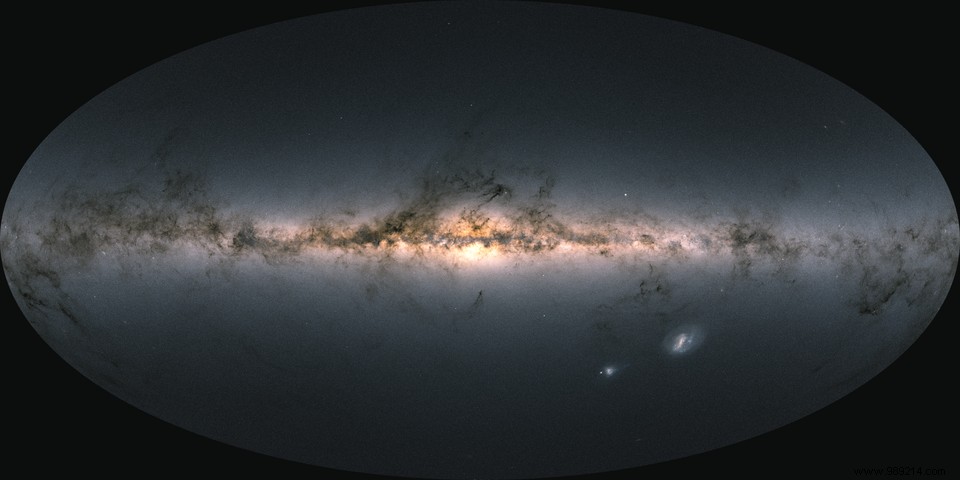The European Space Agency has just released the latest data from its Gaia mission, detailing the physical characteristics and positioning of nearly 1.8 billion stars in our galaxy. The movements of stellar sources in the periphery also bear witness to the Milky Way's turbulent past.
At the end of 2013 the European Space Agency (ESA) launched Gaia, a satellite whose objective is to determine the position, movement and distance of stars of our galaxy in addition to their physical properties . To do this, Gaia operates in an orbit around the Lagrange point 2 (L2), located 1.5 million kilometers behind the Earth in the opposite direction to the Sun. The gravitational forces between the Earth and the Sun are balanced there, so that the spacecraft remains in a stable position.
From this position, Gaia continuously scans the sky, collecting data in multiple bands of the light spectrum and recording data for several thousand stars each day. For your information, the satellite's billion-pixel camera is the largest ever sent into space. The instrument is in fact so powerful that it would be able to assess the diameter of a human hair at a distance of a thousand kilometers.
The latest catalog, published in April 2018, offered us the characteristics of nearly 1.7 billion stars . The new catalog (Gaia EDR3) published this Thursday, December 3 contains the detailed information of approximately one hundred million additional stellar sources . Among them, 300,000 evolve within 326 light-years from the Sun . In addition to including more sources, measurement accuracy has also improved.

New data from Gaia has allowed astronomers to trace the different populations of stars evolving towards the very edge of our galaxy, the galactic anticenter.
This data revealed a component of slowly moving stars above the plane of our galaxy and heading towards it, as well as a component of fast moving stars evolving this time under the plane and heading upwards. “This extraordinary model had not been foreseen before “, underlines the ESA. "This could be the result of the near collision between the Milky Way and the Sagittarius dwarf galaxy in our galaxy's recent past “.
As a reminder, the Sagittarius dwarf galaxy is currently being "cannibalized" by the Milky Way. Its last close pass to our galaxy, to which the press release refers, was not enough to disintegrate it, but the blow was obviously strong enough to disturb some stars in the Milky Way.
Finally, data from Gaia has alsoconfirmed the acceleration of the Solar System around the galactic center. This acceleration is gentle, but enough to deviate the trajectory of our system by the diameter of one atom every second. In one year, this represents about 115 km. Fear not, this first measurement of the curvature of the Solar System's orbit around the galaxy agrees with theoretical expectations. In other words, it's normal.